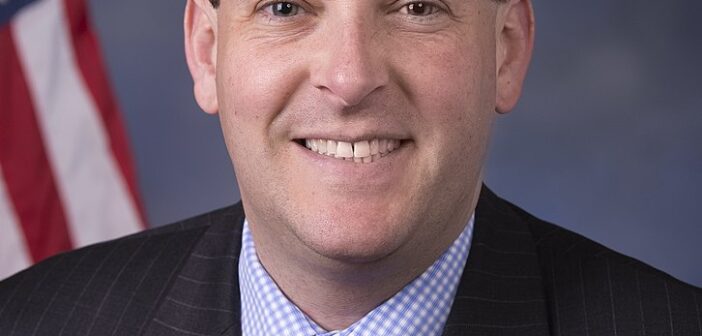He announced that this decision came from EPA Administrator Lee Zeldin. However, the White House later clarified that this wasn’t true.
“After recently identifying $20 billion in fraudulent spending, Administrator Zeldin is committed to eliminating 65% of the EPA’s wasteful spending,” White House Spokesperson Taylor Rogers said.
On March 13, the New York Times reported that Zeldin is planning the “reorganization and termination” of all EPA environmental justice offices.
“Now this is their attempt to kill it for good,” said Representative Zoe Lofgren of California, the top Democrat on the science committee. She spoke out as plans for the EPA to eliminate its scientific research arm were publicized.
The EPA is responsible for “protecting human health and the environment.” Without it, the public will lose crucial information, including data about air pollution, lead-contaminated water and the prevalence of toxic chemicals in the food supply. Consequently, the EPA should receive increased support rather than incurring losses.
Origins of the EPA
President Richard Nixon created the EPA in 1970 as a bipartisan organization to address environmental issues.
The agency became paramount as issues regarding climate justice rose in the 60s. For example, Rachel Carson published Silent Spring in 1962, which opposed the use of pesticides. Additionally, oil rigs exposed toxic chemicals in California, and citizens had concerns about their air and water quality nationwide.

Photo of illegal pesticides courtesy of the EPA
In this era, politicians centered their platforms on environmental concerns. This includes former Maine Senator Edmund Muskie, who sponsored the 1967 Clean Air Act, which passed in 1970.
Since 1970, the EPA has pushed the Clean Air Act, banned DDTs (dichlorodiphenyltrichloroethanes, which are man-made toxic chemicals) in 1972 and imposed violations on big cities and companies that ignore water policies.
Despite this, in 2015, Obama signed a bill reducing funding to the lowest amount the EPA had seen since 1989. Following that, during the first Trump administration, the agency’s funds were cut by 31 percent.
Every cut has massive implications for the EPA as it’s devolving into a pro-business, anti-environmental organization.
“The EPA keeps our air clean, our water safe, and our communities healthy,” New York Congressman Daniel Goldman said on Feb 27.
Environmental neglect
We saw the horrific consequences of the absence of environmental enforcement during the Flint, Michigan crisis when state and federal officials failed to protect their residents from abnormally high levels of lead in their water.
Former Governor Rick Snyder placed Flint under state control due to a 25 million-dollar deficit in 2011. He appointed an emergency manager to ‘oversee and cut city costs.’
This led to the city switching its water supply to cut costs in 2013. Instead of using clean water from Detroit, the residents drank polluted water from the Flint River. The Flint River was a hotbed for nasty chemical and waste pollution. It also reportedly caught on fire twice. The city made the switch without adequately testing the water. This poisoned the residents, who reported experiencing skin rashes, hair loss, elevated lead levels and off-tasting water for 18 months.
The EPA’s work clearly states that there is no safe level of lead consumption. Therefore, they proposed reducing the federal action level for lead from 15 ppb to 10 ppb in 2023 and mandated the replacement of all lead service lines in the United States within 10 years.
However, the EPA failed to act promptly during the Flint crisis, even as citizens petitioned for help. Realistically, this was primarily because the EPA has little authority over state actions.
Quite frankly, a few missteps do not excuse an agency overhaul, especially since the EPA’s benefits outweigh its errors.
Profits over people
In 2020, climate activist Greta Thunberg criticized the EPA.
“The EPA uses this global pandemic to create loopholes for destroying the environment,” Thunberg said.
Thunberg was correct; at this dangerous point in the pandemic, the Trump administration was relaxing EPA oversight on water and air violations from polluters.

Factories exhaust smoke polluting the air courtesy of Unsplash.
Today, President Trump’s administration claims funding reductions are necessary due to alleged fraudulent spending by the EPA towards green groups.
Democratic lawmakers are countering this, claiming that the spending was appropriated through the 2022 Inflation Reduction Act to help local communities. It’s worth mentioning that Zeldin voted against the act.
Zeldin plans “to promote common-sense, smart regulation that will allow American innovation to continue to lead the world.” He intends to have the EPA “prioritize compliance as much as possible.”
This philosophy is disastrous for the environment as a laissez-faire approach allows American businesses to pollute for enhanced production.
Sadly, the EPA is just one of many government agencies preparing for widespread staff reductions from Amy Gleason’s Department of Government Efficiency.
Truthfully, if the members of Trump’s cabinet want to maximize efficiency, they must move beyond climate denial to prioritize environmental justice.

